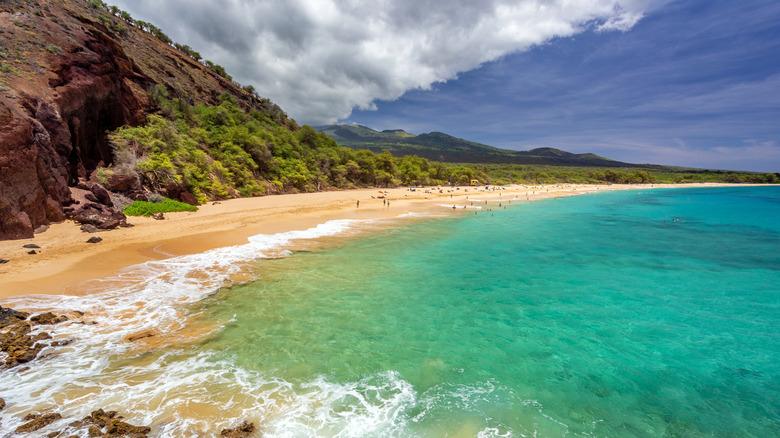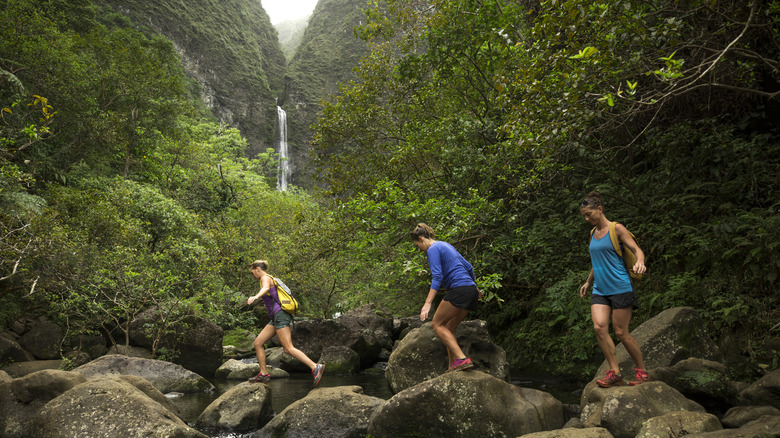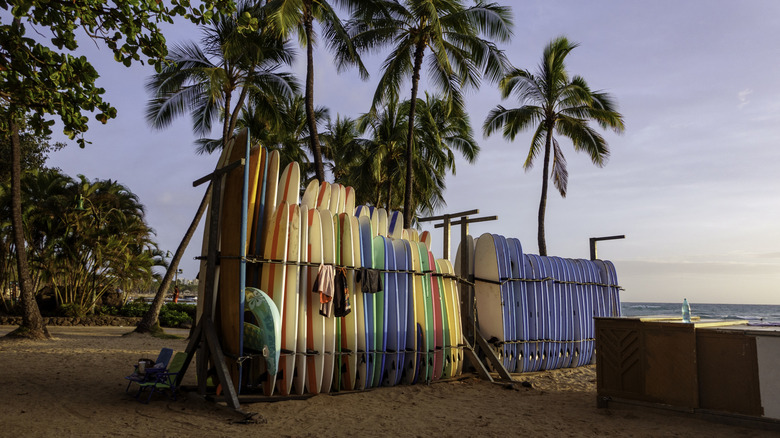Is A Post-COVID Hawaii Still Worth The Bucket List Splurge?
For many, Hawaii is more than a destination — it's an aspirational dream. Its black-sand beaches, dramatic cliffs, and breezy surfer vibe are part of what puts Hawaii on so many bucket lists. That dream lives on, but it's changed. If you're planning a trip to Hawaii in 2025, you should know it's not quite what it was before COVID. The pandemic forced the islands into a hard reset. Borders closed. Flights stopped. Entire economies, deeply rooted in tourism, were put on pause. Even though the island state has reopened, recovery has been intentionally slow. In fact, a full tourism rebound isn't expected until 2027.
Rather than rush back to the old model, Hawaii is embracing something new: regenerative tourism. It means when you visit Hawaii, you shouldn't just come to consume, but to connect. It's a shift from sun-and-surf simplicity to something deeper, but that doesn't mean the magic is gone. It just means you should arrive with a little more intention — and a lot more respect. Is Hawaii still worth the splurge in 2025? Short answer: yes. Keep reading to find out why.
Yes, Hawaii costs more – but it's not the same trip
Let's get this out of the way: Hawaii is more expensive now. Flights, hotels, rental cars, excursions — they all cost more than they used to. But here's the trade-off: What you lose in convenience, you gain in experience. Many of Hawaii's most popular sites now require timed reservations. That may sound like red tape, but it's actually helping to preserve fragile ecosystems and reduce crowds. Want to hike through a rainforest without dealing with the crush of tour buses? This picturesque forest reserve on the Big Island is the kind of uncrowded gem that's finally getting its moment.
Cultural immersion is also having a renaissance. From taro farm tours to traditional canoe lessons, visitors are actively seeking out more authentic, community-based experiences. And the food? Skip the resort buffet and follow Anthony Bourdain's footsteps to eat like a local in Hawaii. You'll uncover the state's layered culinary identity one plate at a time. Travelers used to last-minute bookings may find this new Hawaii to be overly-structured. But if you're a planner, these travel hacks will help you navigate the new normal while still uncovering the island spontaneity you crave.
Post-COVID Hawaii is still a splurge, just a more meaningful one
So, is Hawaii still worth it? If you're chasing a version of Hawaii that's frozen in 2019 — carefree, crowded, and budget-friendly (at least, compared to now) — you might be disappointed. But if you're open to a different kind of trip, one with a little more planning and a lot more heart, the answer is a resounding yes.
Because Hawaii in 2025 isn't just a backdrop for Instagram pictures. It's an invitation to engage: to take part in conservation, support local businesses, learn about Hawaiian history, and show up as more than a tourist. It's slower, yes. Sometimes harder to plan. But it also has the opportunity to be much more fulfilling. You might spend a little more, but you'll come back with something more valuable than a souvenir: memories that feel real, intentional, and rooted in the real Hawaii. Doesn't that sound bucket-list worthy?


